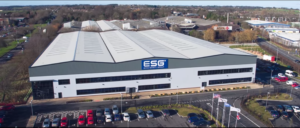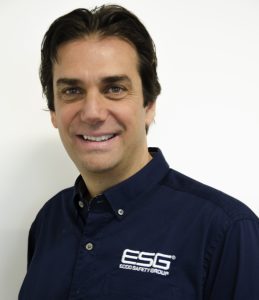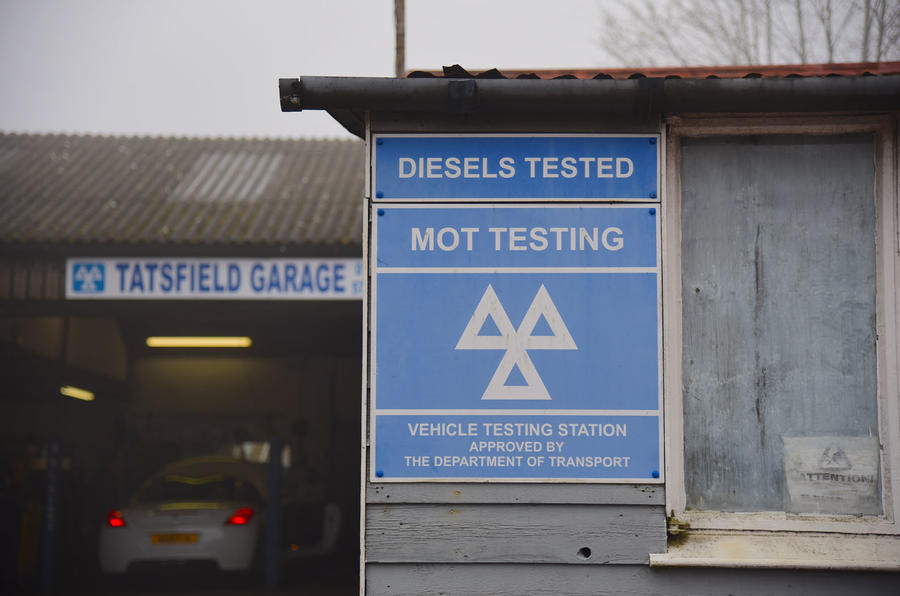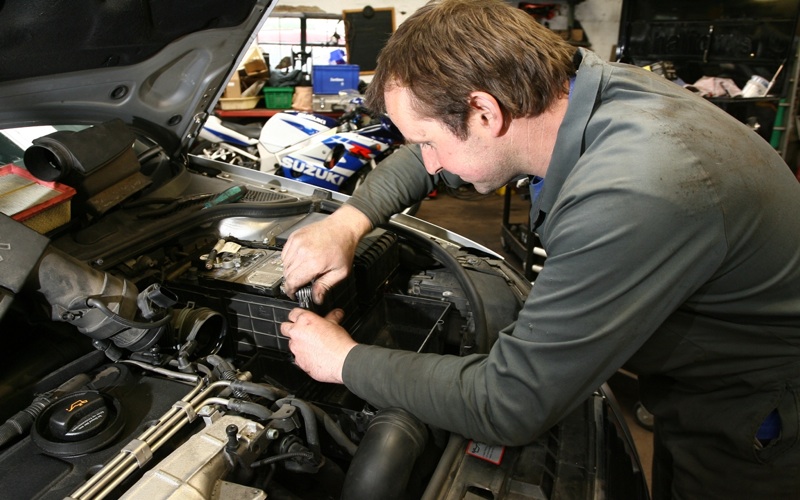This feature first appeared in the July 2018 edition of CAT
Remember Britax? It was once a brand that you wouldn’t get through the pages of CAT without reading about several times. To a lesser extent you might have seen Premier Hazard and Vision Alert in here as well.
It might come as some surprise that Britax was, until very recently, still trading as were Premier Hazard and Vision Alert. All of the brands had a similar product range of beacons, mirrors, reversing alarms, trailer lighting and light bars.

The three brands were based in different locations in Yorkshire, each producing its own product range. To confuse matters further, products could be sold under other Ecco brands and each firm had thousands of SKUs on similar products, none of which were ever officially deleted. The result was a mish-mash of brands with a confused product offering and a near endless inventory.
Something needed to be done and ECCO Safety Group, the American owner of the brands since 1998, decided on a course of radical action. It would strengthen the business by building a modern factory where all of the products under a unified brand would be assembled and stored. This plan is to be replicated across the globe in markets where the parent firm has made local acquisitions over the years, and it has the approval of financial backer Berwing
This is where Italy-born Enrico Vassallo comes in. His varied CV includes a period as CEO of bus makers Optare and Irisbus where he gained a reputation as a manager that could implement sweeping changes. Nonetheless, he is open about how challenging deliverin the transformation has been so far: “It’s been one of the toughest years in my professional life” he said, explaining that it took more time than expected to physically get the building ready and then to put the systems in place to start the production of goods.
Noise in the system
“There was some misalignment in the system that caused a lot of ‘noise’” he said, referring to the complicated logistical systems needed to manage the manufacture products in small batches. “When we turned on the lights we weren’t immediately able to assemble the components in the proper way. That meant we had delays in production output” he said, adding that staffing was also initially an issue as not all of the trained operatives had transferred to to new building. “I was a lucky person, because before I joined it wouldn’t have been possible [to implement the changes] at all” he said, adding that a lot of work was put in to make sure that no key account customer was let down.
The months between june and November 2017 were particularly difficult for Vassallo and the team, partly to do with the reasons stated and partly because not all workers joined from the previous locations, meaning agency staff had to be used and a process started to hire new recruits. However, by December most of the production problems had been resolved and the plant achieve the planned output, meaning it can now follow market demands.
READ: ECCO SAFETY GROUP ACQUIRED BY CLARIENCE
Brexit, or rather the uncertainty that surrounds it, hasn’t helped matters. Vassallo admits that it is difficult to form a plan when you don’t quite know what to plan for. However, growth is expected to come from demand continental Europe, so warehouses in Ulm, Germany and Leon, France are to be expanded to support logistics which will be useful regardless of the customs situation in the future. “We want a six hour delivery (in Europe) and not the three days coming from the UK” he said. All assembly will be done in Leeds, though there is the possibility of adding finishing stations in the Ulm plant to adapt products for local markets or individual clients.

This projected growth in Europe is a key part of the company’s plans and it will be down to Vassallo and the team to implement them. “My responsibility is to work out how we can transform a successful business in the UK to be successful across the European continent” he said.
Turning a large empty building into a factory might be time consuming and frustrating, but it is at least a tangible problem that can be solved. An intangible problem is what to do with customers that have got so used to the legacy brands. “There is a lot of emotion and there is value in the brands” Vassallo admits.
Brand choice
Taking a walk around the plant, it is clear that some of the OE clients haven’t lost all of their attachment to the previous brands just yet as we noted a number of Britax boxes still being filled in various assembly cells. What has been reduced, by some drastic amount is the number of SKU’s from 15,000 to just 2,000. This has been done in a number of ways such as deleting obsolete products: For example, dozens of styles of Xenon light bars for emergency vehicles were on the books and held in stock. Xenon bars have long since been superseded be LEDs as they are brighter, cheaper and last longer. However, the older models remained available as some customers would ask for them. Under the new plan it is far simpler to have a rep explain the benefits of a more modern design to the customer, rather than keeping stock of old product.
Another idea to simplify the range is to produce products that can easily be adapted to individual client’s requirements rather than having a separate reference for every configuration. The firm’s current Vantage light bar has been tested to meet any number of approvals for different countries and can be adapted accordingly.
The products are mainly assembled in production cells, using a version of the lean manufacturing method, although one item (a basic orange light bar for recovery trucks) is produced in greater quantities in an arrangement more similar to a production line. Behind the production area is storage, with 9,000 pallet spaces and twenty aisles. Roughly half of these stock locationare filled with finished goods, while the rest is components and mouldings awaiting assembly.
ECCO through its various brands has always offered mirrors to OE customers and the aftermarket. It follows that the company would want to offer camera systems as the market changes, and the new facility has a dedicated room for assembly away from the main production floor. “Technology is changing. When you think about mirrors, they are an old fashioned design with glass. I love them because they are part of the design of the cab and make up the look of the [whole vehicle], but for the future, the trend is to move into cameras” said Vassallo, adding that sensors and all the electronics that go with them were also part of the firm’s strategy for the future.
R&D is also on site, with a large room set aside for engineers to experiment as new products are developed. On our visit, various prototypes of the new Vantage lightbar for different markets were being put together, while various other mirrors, beacons and reversing sensors were being put through their paces in an environmental test room, which contained the usual gear required to run OE tests, such as cabinets humidity, water spray, vibration and extremes of temperature.
This gives the firm’s sales team a robust product suite to take to market, and a strong message about high-quality UK-made equipment for distributors to promote. “The dealer has to be our partner” explained Vassallo, adding that investing in them and giving them good products will help the relationship.
There are a number of threats to the business: We have already mentioned the uncertainty of Brexit at a time where the European market has never been so important, but there are also threats from low-cost products from the Far East as well as the ever-present competition for contracts from more established rivals.
Despite this, we suggest that thanks to the new warehouse and functioning logistics systems, the year ahead for Vassallo and team will be a lot less tough than than the last. Britax et al may be gone, but the strength of the new brand will be judged by the quality of its products.











Go to comments